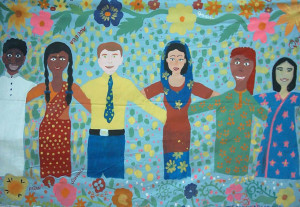Gentrification a threat to true diversity – study
‘Gentrification’, or the movement of middle class white people into poor non-white areas, is increasing inequality and division in some communities, according to new research.
And the process is creating ‘polarisation’ within both schools and multicultural communities, the study says.

Gentrification is increasing inequality and division in many communities
Gentrification can initially ‘enhance the social and cultural diversity of an idea’ as differences are made normal through everyday interactions with those from differing cultural backgrounds, according to researchers Dr Christina Ho, Senior Lecturer in Social and Political Sciences at the University of Technology Sydney, and Dr Eve Vincent, a lecturer at Macquarie University.
In this initial stage, the researchers say, gentrification is valued by ‘both white and non-white families’.
But over time problems emerge when the schools no longer accurately reflect the multiculturalism that exists in the community itself, the researchers say.
The study focused on two public primary schools within a particular Sydney suburb, which have ‘long histories of servicing disadvantaged, multicultural communities’.
While one of the public schools has become ‘highly desirable’ for white middle-class, the other remains ‘rough’ and ‘avoided’ by certain parents, the study found.
One of the schools has ‘less than a third of students from a language background other than English’, while more than half of the residents in the suburb speak a non-English language, the study said.
“The attendees of the same school recognised that they were ‘in fact part of a movement displacing non-white residents”, it said.
The number of ‘non-white students fell so dramatically’ that the school lost funding for teaching community languages.
For Ms Ho and Ms Vincent, this school reflects a phenomenon of ‘cosmo-multiculturalism’, which involves ‘multiculturalism without migrants’.
The white majority engage with the multicultural community through ‘consumption’, such as enjoying ethnic cuisine, the researchers said.
At the second, more diverse public school it was still found that ‘ethnic mixing occurred more extensively among non-Anglo families’, the study said.
Even in multicultural communities, racial diversity is not a given, the researchers said.
Some parents at this school ‘expressed disappointment’ that ‘friendship circles did not reflect the full diversity of the school’, they said.
According to Ms Ho and Ms Vincent, this research reflects previous work that shows ”gentifiers who profess to value diversity often do not have culturally diverse social networks”.
The division and inequality within schools will only continue to grow due to schools intense competition with each other and the ‘marketisation’ of education, the study said.
New wealthier, middle-class families moving into urban areas have the option of bypassing undesirable public schools, while working-class families ‘tend to use their local public school’, leading to a polarised community, it said.
“Gentrification of communities is leading to schools being fragmented by ethnic background and class values and is threatening ‘social cohesion and justice’ within Australia,” the study said.
Laurie Nowell
AMES Australia Senior Journalist












